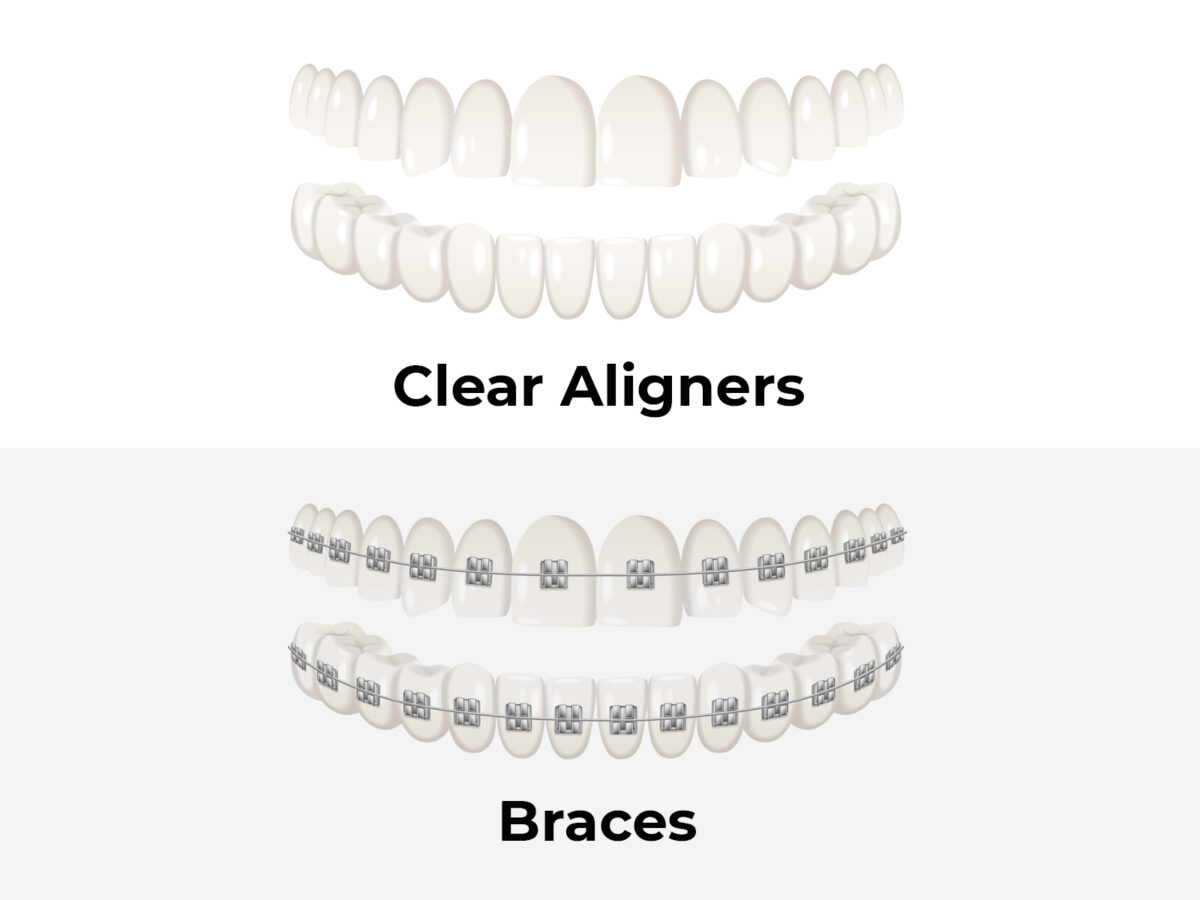Blog
Dental hygiene tips for healthy teeth & gums

Braces Or Clear Aligners: What You Need To Know!
You simply use clear aligners or dental braces to straighten your teeth if they are misaligned or uneven. The majority of clear aligners are braces, but the majority of dental braces are not clear aligners. They are both equally important depending upon the condition of the teeth.
These days, most people are looking for the most convenient, least visible, and fastest way to straighten their teeth. The question is, which is best, braces or aligners?
There is no simple answer to this question because all patients are different and have different issues.
So, what should you know about both these dental devices to help you make an informed decision? Well, do not worry because you have landed at the right place to know all about it.
What are dental braces and how does it work?
Let’s first talk about dental braces. An individual can use these dental instruments directly on their teeth in order to promote good dental hygiene and get rid of alignment issues.
It is for your own good that you wear these metal instruments, even though they may make you feel odd and different at the start.
Traditional braces are made up of brackets attached to the teeth. As a result, the periodontal membrane and the surrounding bones are affected by the appropriate force and pressure used by them.
Stretching on one side and compressing on the other results in the membrane being stretched out. As a result, the tooth loosens and can be positioned in the correct alignment.
Furthermore, you can choose between a lingual, ceramic, or traditional brace.
What are clear aligners and how do they work?
There is no doubt that clear aligners are the best alternative to dental braces. As well as using force, they also use heat to restore the teeth to their original shape.
A durable plastic mold is used to make it, which is customized to fit the teeth of each patient. To get the most benefit, they must be worn between 18 and 20 hours a day. Depending on your tooth condition, these are generally changed every two weeks.
First, your orthodontist determines how your bite develops. Once the plan is created, he/she will prepare the aligners and move the teeth accordingly.
Your mouth is then fitted with this instrument. You will need to make small adjustments based on how your teeth are moving at the moment.
Acrylic is usually used for these because the material provides a tight grip. There are also several comparison scales included.
Which one should you go for: Braces or aligners?
Before going for any of these dental devices you must keep a few things in mind:
For Braces:
Duration of treatment – Depending on the patient’s needs, it can take up to one year. In most cases, it takes longer.
Age – The best time to undergo teeth alignment treatment is between the ages of 10 and 14. Both sides of the face are still developing at that time, which is optimal.
Level of comfort – Shifting teeth is bound to cause some discomfort at times.
Effectiveness – They are able to undertake larger alignment processes because of their powerful and forceful approach.
Cost – The treatment is affordable and does not exceed what is necessary.
For Aligners:
Treatment time – depends on the movement of teeth, but typically takes 10-24 months.
Age: In adults, it is very popular partly because of its appearance, and in children, it can be used on the recommendation of the dentist.
Level of comfort – It is quite comfortable and can be removed easily.
Effectiveness – Only mild straightening and small-scale treatments are possible with them.
Cost – Generally, it is more costly than braces, but it could be similar also depending upon the condition of your teeth.
So, after comparing all the pros and cons and talking to your dentist about the same you must come to a decision. Both these dental devices are equally effective and target the same issues but at different intensities.
